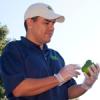Hello,
I am not really familiar with ATP, but does a swab of the hands not also show the normal human cells you may grab with the swab?
I know ATP for testiong machines, but I think for humans it may not be very realistic.
Yours
Werner
@ AIFSQN and SIFSQN...
Right, ATP It does not detect bacteria but Adenosine triphosphate, and if what you need to detect is bacteria, then is totally useless, but of course ATP has its place in the food safety process depending of what you need. If you need a quick and cheap verification method for cleaning effectiveness in equipment this is great as we all know, but it could also be used for hand washing verification.. Although I personally like it more for a training tool for proper hand washing..
And yes, the target on hands would not be “0” (as it is not for equipment neither), but you need to make a base line, and of course take the sample right after hands have been washed..
For your reference, I borrowed my ATP tested along with a lot of swabs that were close to expire to my 9 yr. old daughter for her school science project. She wanted to know if there was a difference on cleaning hands for 5. 10 and 20 seconds. She tested a bunch of kids before washing hands, and then after washed for 5, 10 and 20 seconds with the ATP, I helped her with the data she collected and the ATP test results actually showed a clear baseline and direct relationship between time and cleanliness. Of course there were some “special causes” (e.g. there is always a kid who uses his hands to dry her hands instead of the paper towel as instructed), but after the data was normalized, we got that in average, dirty hands were 10.223 RLU (Relative Light Units), hands washed after 5 seconds read 228, washed for 10 seconds were 109, and for 20 seconds 31.. (With actually some of single samples in “0”).
Dirty
5 Sec
10 Sec
20 Sec
Average RLU
1022.3
228.8
109.1
31.4
So in conclusion, even this was a “pretend” science project, it is clear that ATP can be a good and cheap instant indicator and monitoring procedure for hand washing, when used properly, and again, depending of what you need to achieve.
![]()























